SUMMARY
This is AI generated summarization, which may have errors. For context, always refer to the full article.
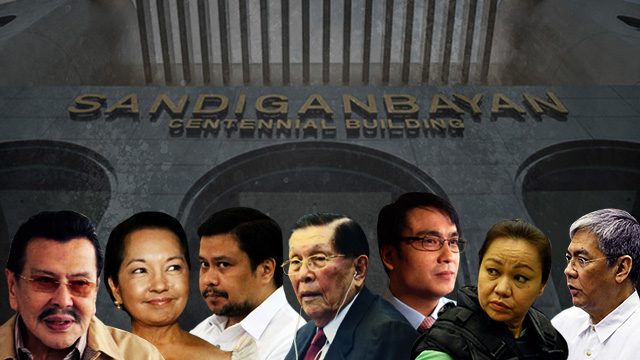
MANILA, Philippines (UPDATED) – While Congress is mulling the idea of reviving death penalty in the Philippines, the reported removal of plunder among the list of crimes in the proposed measure drew sharp reactions on social media.
On February 9, House Speaker Pantaleon Alvarez Jr said that most congressmen in the House majority bloc agreed to remove plunder from House Bill 4727.
Alvarez later clarified that the said removal is not yet final, adding that it is still in the current version of the measure. Alvarez said he supports retaining plunder in the death penalty bill. (READ: Alvarez wants House to pass death penalty bill mid-March)
Sanctioned by death or not, was anybody ever convicted of, or punished for, plunder in the first place? What has happened to past plunder cases? Rappler reviewed these cases and this is what we found.
Convictions
From the enactment of the Plunder Law in 1991 up to 2016, the anti-graft court Sandiganbayan has handled only 13 plunder cases.
Of these, only two people were convicted: Bureau of Internal Revenue (BIR) cashier Dominga Manalili and former president Joseph Estrada.
Manalili is still serving her sentence: two terms of reclusion perpetua. Estrada, who was sentenced with reclusion perpetua, was pardoned by his successor Gloria Macapagal Arroyo a month after his conviction.
The list below begins with the 7 pending cases, followed by the 6 resolved cases, sorted by the amount of money involved, in descending order.
Pending cases
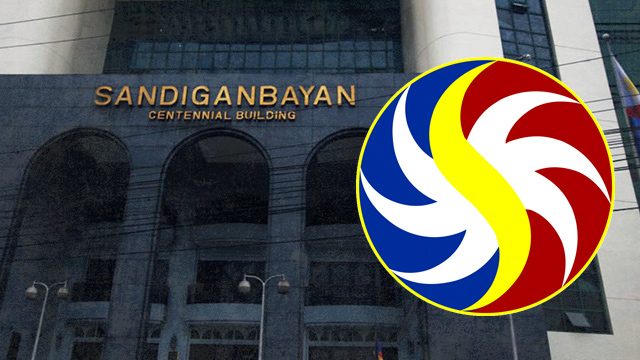
PCSO intelligence fund scam
Amount involved: P365,997,915.00
Status: Pending, with 3 remaining defendants
In July 2012, former president Arroyo faced plunder charges along with 7 Philippine Charity Sweepstakes Office (PCSO) officials and two Commission on Audit (COA) executives for the alleged misuse of PCSO intelligence funds from 2008 to 2010.
The Supreme Court (SC) in July 2016 acquitted Arroyo and PCSO budget and accounts manager Benigno Aguas for lack of evidence. Earlier, the Sandiganbayan had also released 5 PCSO and COA officials. (TIMELINE: Gloria Arroyo – from plunder to acquittal)
The case is ongoing at the Sandiganbayan with 3 remaining defendants: former PCSO general manager Rosario Uriarte, ex-PCSO director Ma Fatima Valdes, and COA intelligence fund unit head Nilda Plaras.
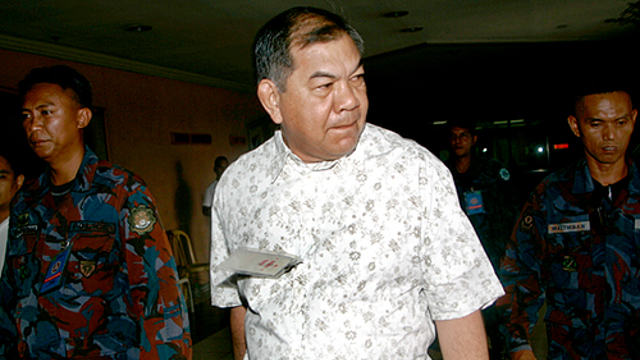
General Carlos Garcia plunder case
Amount involved: P303,272,006.00
Status: Pending
In April 2005, the Ombudsman filed a plunder case against ex-military comptroller and retired Major General Carlos F. Garcia, his wife Clarita, and sons Ian Carl, Juan Paulo, and Timothy Mark. They are accused of amassing over P300 million in real estate properties, shares of stocks, cash, and other assets.
The Sandiganbayan in May 2011 approved a plea bargaining agreement with Garcia, allowing him to plead guilty to lesser offenses of direct bribery and facilitating money laundering. (Read: Garcia: How the big fish got away)
However, in July 2013, the Supreme Court issued a temporary restraining order on the plea bargain deal. Garcia is currently detained at the New Bilibid Prison.

3 pork barrel scam cases vs. senators
Amounts involved: P224.51 million (Revilla), P183.79 million (Estrada), P172.83 million (Enrile)
Status: Pending
In June 2014, 3 senators were charged with plunder for their reported involvement in the 2013 pork barrel scam, an elaborate scheme where public funds for supposed government projects were diverted and pocketed. (READ: Pork Tales: A story of corruption)
A plunder case was filed against then Senator Ramon “Bong” Revilla Jr, his staff Richard Cambe, alleged scam mastermind Janet Lim Napoles, her brother Ronald John Lim, and her employee John Raymund de Asis.
Another was filed against then Senator Jinggoy Estrada, his staff Pauline Labayen, Napoles, and De Asis. (READ: How will Sandigan justices handle plunder cases?)
The 3rd case was filed against Senator Juan Ponce Enrile, chief of staff Jessica Lucila “Gigi” Reyes, Napoles, Lim and De Asis. (READ: Plunder cases: Highs and lows)
Among the senators, only Enrile is out of detention, after the Supreme Court in August 2015 granted his petition for bail.

2 pork barrel scam cases vs. congressmen
Amounts involved: P112.29 million (Lanete), P95 million (Valdez)
Status: Pending
In February 2015, the Office of the Ombudsman filed plunder cases at the Sandiganbayan against former Masbate representative Rizalina Seachon-Lanete and former APEC party list representative Edgar Valdez in connection with the pork barrel scam.
Janet Lim Napoles and her driver John Raymund de Asis are named co-accused in both cases.
However, both Lanete and Valdez are out on bail, after the Sandiganbayan granted their petitions in April 2016.
Disposed cases
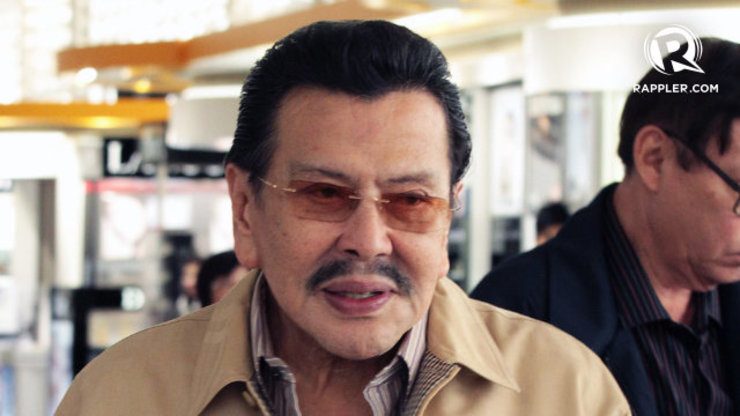
Erap Estrada plunder case
Amount involved: P4,097,804,173.00
Decision: President Estrada was convicted, son Jinggoy acquitted. One pleaded guilty, 5 remain at large.
In April 2001, ousted president Joseph Estrada, his son Jinggoy, and 7 others faced plunder charges for amassing over P4 billion from jueteng payola (pay-offs), misappropriation of tobacco excise tax funds and other crimes.
In September 2007, the Sandiganbayan sentenced former president Estrada to reclusion perpetua. But a month later, his successor Gloria Arroyo granted him pardon.
The anti-graft court cleared Jinggoy and lawyer Edward Serapio of the plunder charges. Another co-accused, Charlie “Atong” Ang, pleaded guilty to a lesser offense and served out his 2-year probation until 2009.
Meanwhile, the rest of the defendants – Alma Alfaro, Jaime Dichaves, Delia Rajas, Yolanda Ricaforte and Eleuterio Tan – remain at large. They have yet to stand trial. (READ: Cast in Erap plunder case: Where are they now?)
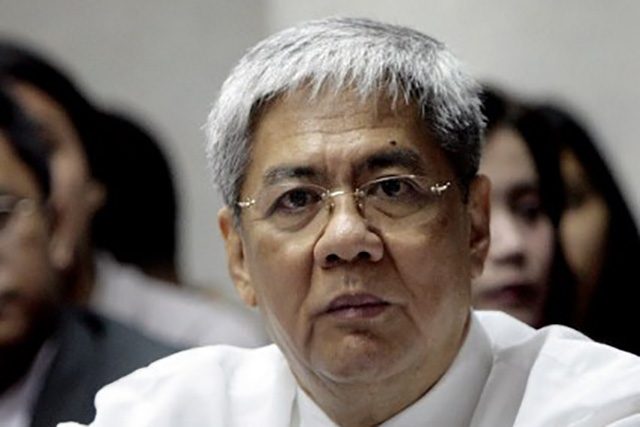
Fertilizer fund scam
Amount involved: P265,642,930.50
Decision: Case dismissed
In July 2011, 3 officials of the Department of Agriculture (DA) were charged with plunder for reportedly getting kickbacks from the P723 million in fertilizer funds meant for farmers under the department’s Ginintuang Masaganang Ani program.
Former agriculture undersecretary Jocelyn “Joc-Joc” Bolante, former secretary Luis Ramon “Chito” Lorenzo Jr, ex-assistant secretary Ibarra Poliquit, and 6 private defendants were accused of the crime. One of the defendants later became a state witness.
In December 2016, the Sandiganbayan dismissed the case after affirming its initial finding 2 years ago that there was no evidence against the accused.
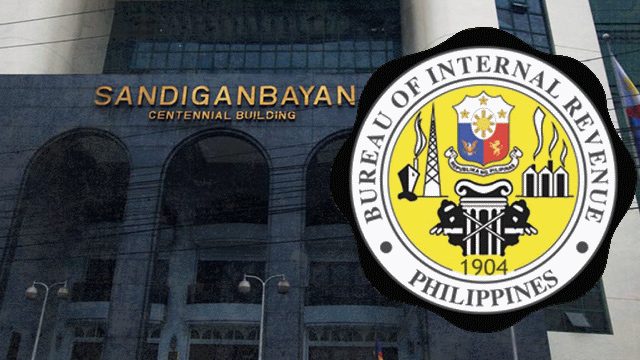
2 tax payments diversion cases
Total amount involved: P260,315,481.60
Decision: Transferred to a Quezon City trial court, which found 5 people guilty
Bureau of Internal Revenue (BIR) cashier Dominga Manalili and 6 accomplices faced two plunder charges in August 1997 for diverting tax payments of government and private employees to unauthorized bank accounts in 1996. This was the first plunder case filed before the Sandiganbayan.
Investigators said the bank accounts were “almost depleted” when they discovered them in late 1996. In November 1999, the Sandiganbayan transferred the case to a trial court, which had proper jurisdiction over the case.
On May 4, 2001, Quezon City Regional Trial Court Branch 95 Judge Diosdado Peralta (now a Supreme Court Associate Justice) found Manalili guilty of plunder, sentenced her to two terms of reclusion perpetua, and ordered her to return the stolen money plus profits. Four of her co-accused were also guilty but remain at large, while two accomplices were cleared of the charges.
Peralta ruled that Manalili would not face the death penalty “because there were no aggravating circumstances.”

Fake vehicle repairs case
Amount involved: P82,321,855.38
Decision: Case dismissed, but many defendants faced multiple graft and estafa charges
“Ghost” or fictitious repairs of Department of Public Works and Highways (DPWH) vehicles led to the filing of a plunder case in March 2004. The case involved 20 DPWH officials and 10 spare parts suppliers.
An investigation revealed that over 500 vehicles were supposedly “repaired” in just a span of 10 months, from March to December 2001.
However, the Sandiganbayan dismissed the case in January 2005 “for lack of probable cause for the crime of plunder without prejudice to the filing of appropriate charges against the accused-respondents.”
Graft and estafa charges were later filed against nearly all of the respondents – with 6 people sued for over 100 counts of each crime – starting in 2013. (READ: Plunder, graft: What’s the difference?)
Since November 2016, the Sandiganbayan has promulgated at least 3 decisions, convicting 10 to 11 of the defendants of graft and estafa.

Tax credit certificates scam
Amount involved: P73,762,618
Decision: Case dismissed, but many defendants faced multiple graft and estafa charges
In March 2009, a plunder case was filed against Department of Finance (DOF) officials who were involved in the illegal issuance of tax credit certificates to an unqualified firm between 1994 and 1996.
The case was against DOF undersecretary Antonio Belicena, deputy executive director Uldarico Andutan of the DOF-One Stop Shop Inter-Agency Tax Credit and Duty Drawback Center, two other finance employees, and 4 executives of Filstar Textile Industrial Corporation.
In March 2011, the Sandiganbayan dismissed the case for lack of probable cause. But in recent years, the anti-graft court made rulings in separate but related graft and estafa cases against some of these respondents, as well as officials of other unqualified companies.
For instance, the Sandiganbayan found Andutan and 5 others guilty of multiple counts of graft in June 2016. But it reversed its decision in January 2017 amid new evidence that proved crucial to that case.
Plunder and the death penalty
When it was first enacted, plunder was not punishable by death, only by life imprisonment. (READ: Plunder in the Philippines)
An amendment to the Plunder Law in 1993 through Republic Act (RA) 7659 lowered the minimum amount of illegally acquired wealth to qualify as plunder – from P75 million to P50 million – and meted out a punishment ranging from reclusion perpetua to death.
During the 13 years that plunder was punishable by death, from 1993 until the abolition of the death penalty in 2006 via RA 9346, none have been sentenced to death for being guilty of plunder.
Data from the Sandiganbayan show that it took the court an average of 3.2 years to dispose of plunder cases. If pending cases are included, the average duration of proceedings in the anti-graft court is 3.69 years. (READ: Plunder and graft trials: How do cases proceed in the courts?)
The current punishment for those found guilty of plunder are reclusion perpetua and forfeiture of ill-gotten assets in favor of the government. – with Gwen de la Cruz/Rappler.com
Help fight corruption by sharing stories about high-profile cases. Learn more about the impact of corruption and ways to fight this menace. Visit www.fightcorruption.ph #CorruptionPH #NotOnMyWatch
Add a comment
How does this make you feel?
There are no comments yet. Add your comment to start the conversation.